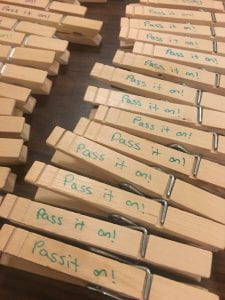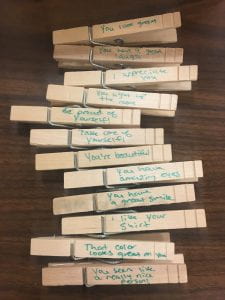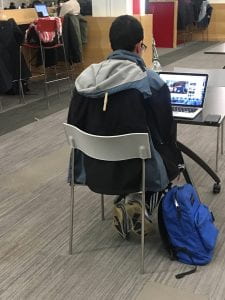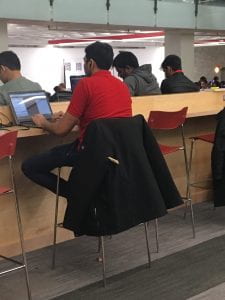Artwork #3 (Intervention): Pinning Positivity
Materials:
Clothes pins with compliments written on one side and “Pass it on!” written on the other (10 for each player)
Rules:
Can be played with any number of teams (1 person per team)
Players receive 10 clothes pins each
Players have 5 minutes to distribute the clothes pins (and compliments) however they see fit. The goal here is for players to read the compliment written on the pin and to attach the pin to a stranger (without being noticed) who they think the compliment applies to.
Players earn 1 point for every clothes pin they attach to a stranger without getting noticed
Players lose one point every time they are caught
After 5 minutes, the scores are tallied. The winner is the player with the most points.
Artist’s Statement:
The point of this intervention is to anonymously spread positivity and compliments. I think that our generation sometimes has trouble expressing sincerity without being able to hide behind the veil of social media, and this game makes it easy to compliment people and express your thoughts without being overt, awkward, or uncomfortable. In many ways, it is a social statement on how difficult it has become to approach a stranger and compliment them, and it proposes a solution to this problem and is an example of a way to spread positivity without direct and uncomfortable communication. I wanted players to have to carefully consider who they attached the pins to by reading the pin and looking at the people around them, and to then tactically decide how to attach it without drawing attention to themselves. This game makes the daunting task of approaching a stranger and complimenting them fun and far less intimidating, tasking them with maintaining anonymity and turning the entire process into a game.
The playtests I conducted for this game went extremely well; they were very fun to watch and player feedback suggested that trying to attach the pins without being noticed was difficult but felt very rewarding. Players said that they enjoyed the game, and that it was a playful, fun, non-awkward alternative to approaching a stranger and verbally complimenting them. I am very happy with the results of the playtests and think that this game accomplishes most if not all of what I was aiming for.
Inspiration:
I have three primary inspirations for this game. I was largely inspired by my friends, who used to have an obsession with pinning clothes pins to people’s backs without them noticing. They once pinned me when I was going through airport security, which made me pretty upset. However, I appreciated the intervention and playfulness of the action, and wanted to translate this into a more positive and less annoying game.
I was also inspired by the Jejune Institute and the idea of bringing players into a magic circle that merges with the real world. It’s a game that brings people into it without them really realizing that they are a part of a game; to most people, the pins are nothing more than an everyday artifact, but to players, they represent a way to communicate with those outside of the magic circle and potentially bring them into it, encouraging them to pass on the positivity.
I was also inspired by such interventions as the Gameboy/Super Kid Fighter intervention and the Barbie Liberation Organization intervention, and the idea of intervening with people in a way that could be considered mildly annoying but also has an undeniable aspect of humor and clever playfulness that, in my opinion, largely negates whatever inconvenience it may bring.
Pictures:

Each clothes pin says “Pass it on!” as a way to encourage spreading the positivity.

Examples of phrases on clothes pins

A pinned student

A pinned student who took off his jacket without noticing the pin.
Video of gameplay:
https://drive.google.com/file/d/11-Uqh0Vc6ozb2Kj_1grLop8GwEupfyoX/view?usp=sharing
